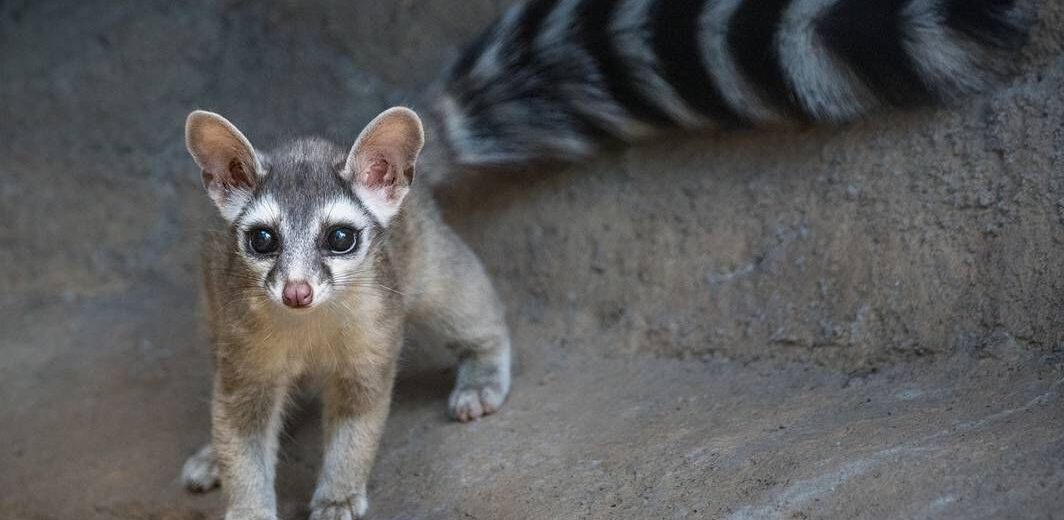
The ringtail cat looks a little like a cat and a fox merged together. However, they aren’t cats and they aren’t foxes. They are more closely related to raccoons. As they are Arizona’s state animal, they are a protected species. So, no touchy! These cute little critters can be found in a surprisingly large range, from Oregon, down south through California, southern Nevada, Colorado, Utah, Arizona, New Mexico, Texas, Oklahoma, Kansas, Baja California, and northern Mexico. They have several nicknames including civet cat, miner’s cat, and cacomistle (an Aztec Nahuatl word that translates to half mountain lion). They like to hang out in trees and shrubs near riparian areas.
First the Stats…
Scientific name: Bassariscus astutus
Weight: Up to 2.2 lbs.
Length: Up to 2+ feet, including the tail
Lifespan: Up to 9 years
Now on to the Facts!
1.) The ringtail cat is nocturnal (active at night) and solitary.
2.) Ringtails are superb climbers able to ascend vertical trees, walls, rocky cliffs, and even tall cacti. They are able to rotate their hind feet 180°, giving them an excellent grip for descending as well.
3.) They are capable of many sounds, like squeaks, chitters, metallic chirps, hisses, whimpers, chucking, grunts, growls, and ululations (long, wavering, high-pitched vocal sound resembling a howl).
4.) These critters are listed as Least Concern by the IUCN.
5.) Their diet includes insects, snakes, lizards, small mammals (like mice), woodrats, squirrels, as well as birds, bird eggs, and fruit.
But wait, there’s more on the ringtail cat!
6.) Predators of these adorable creatures are the great horned owl, coyotes, and bobcats.
7.) Mating happens between February – May and females are typically responsible for raising the young.
Did you know…?
In August, 1986 the ringtail became the state mammal of Arizona.
8.) Females produce 2 – 4 cubs who’s eyes open in 4 weeks. They begin hunting in 4 months.
Now a Short Ringtail Cat Video!
Also, check out the Critter Science YouTube channel. Videos added frequently!
Want to suggest a critter for me to write about? Let me know here.



